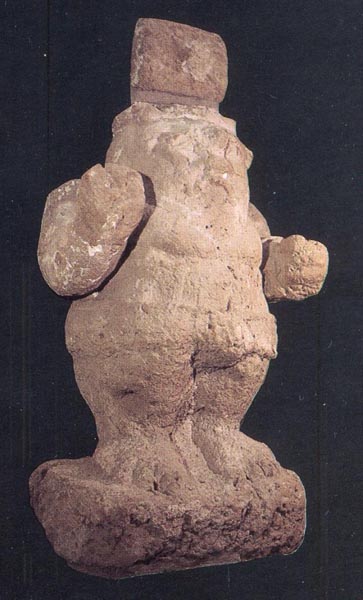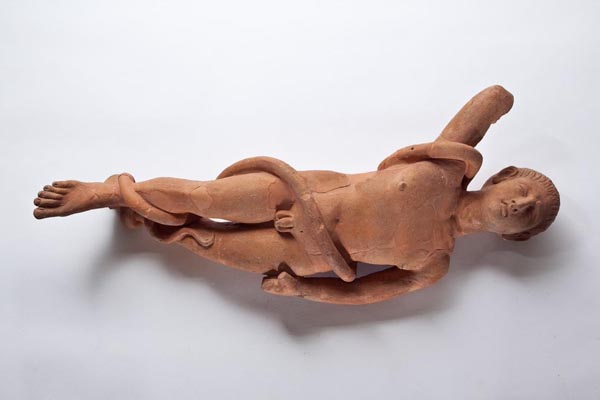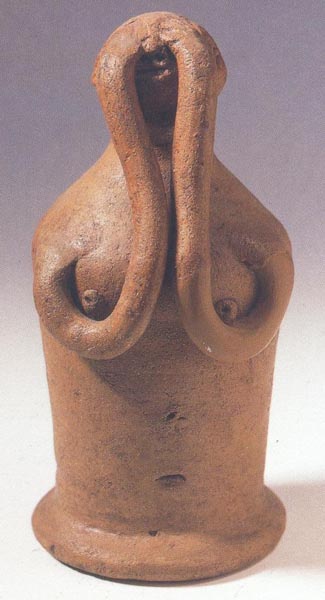The cults of sanatio
Some Fordongianus inscriptions, dedicated to the Nymphs, water divinities, and to Asclepius, the healthy divinity. The presence of curative thermal waters gave rise to the cult, as in other Sardinian localities with Baths and health cults, like in Mitza Salamu of Dolianova. Small sanctuaries and places of worship to obtain the healing of their devotees were spread all over the late-Punic and Roman Republic period, from the III-II cent. A.D. onwards; also without springs with curative waters and dedicated to the duo Bes/Asclepius, like at Bithia (fig. 1) and Nora (fig. 2).


The offerings are often simple and at times rough, small terracotta statues, with the hands indicating the part of the body for which healing is being invoked (figs. 3-4).


Bibliografia
- F. BARRECA, La civiltà fenicio-punica in Sardegna, Sassari 1986.
- A. M. BISI, Le terrrecotte figurate, in S. Moscati, I Fenici, Milano 1988.
- A. CAMPUS, Appunti e spunti per un’analisi dei complessi votivi punici in Sardegna, in AA.VV., Phoinikes B Shrdn. I Fenici in Sardegna, Oristano 1997, pp. 167-176.
- G. GARBATI, Religione votiva. Per un’interpretazione storico-religiosa delle terrecotte votive nella Sardegna punica e tardo-punica, Roma 2008.

 VR
VR